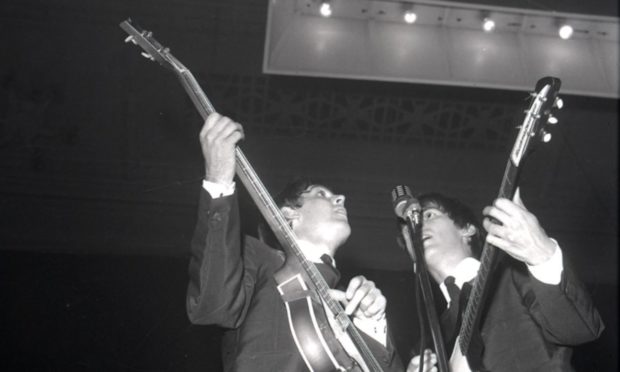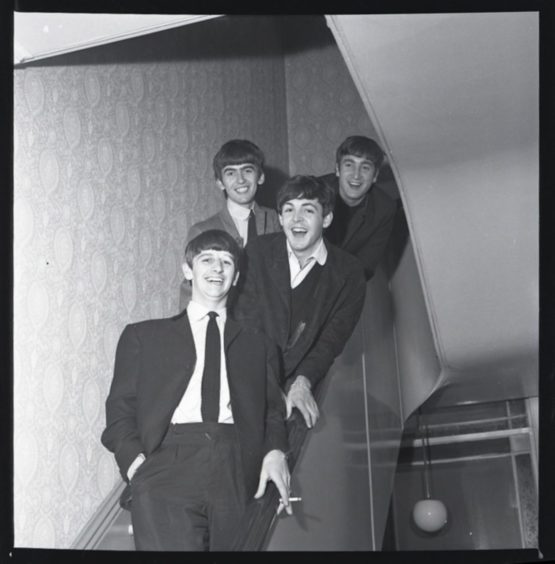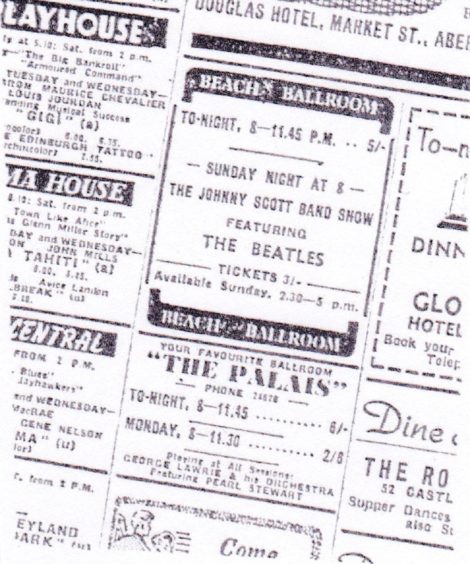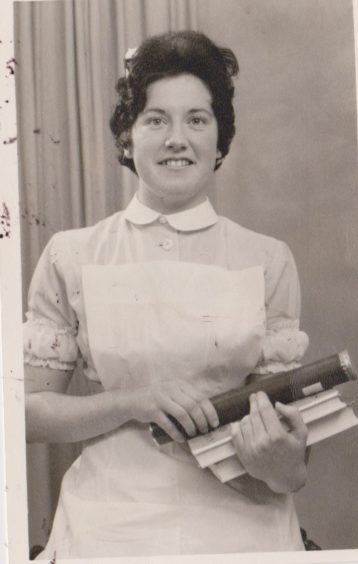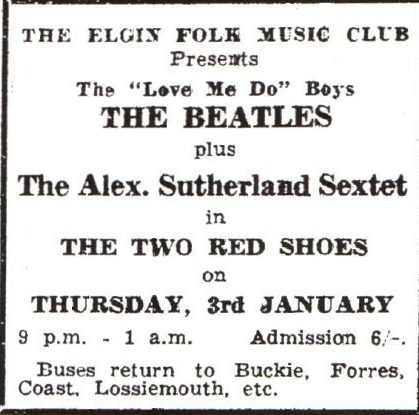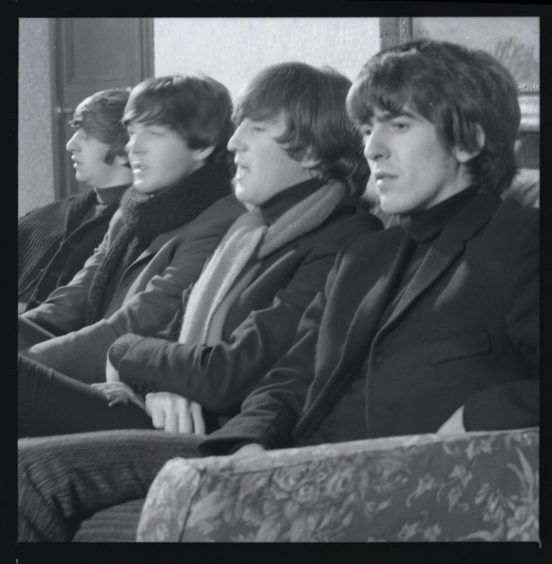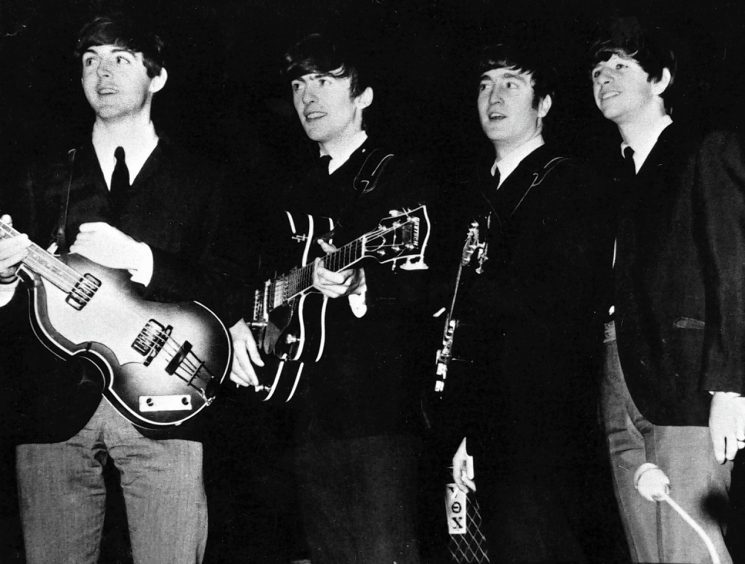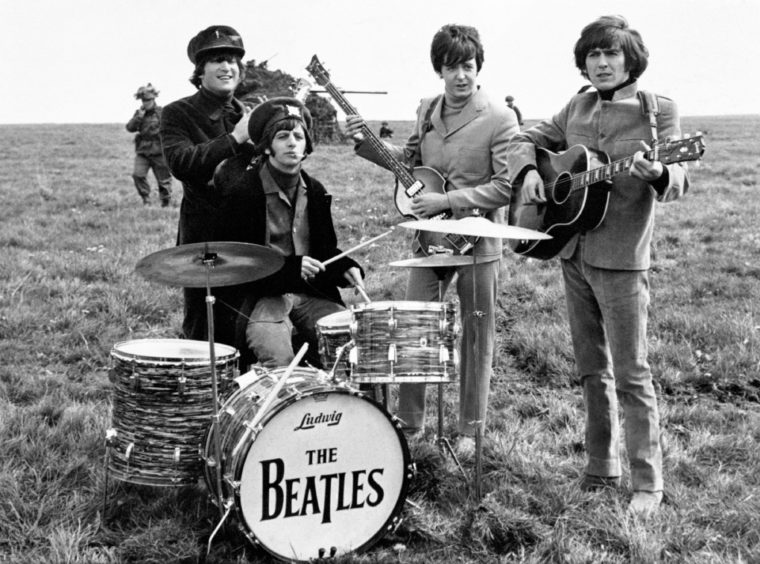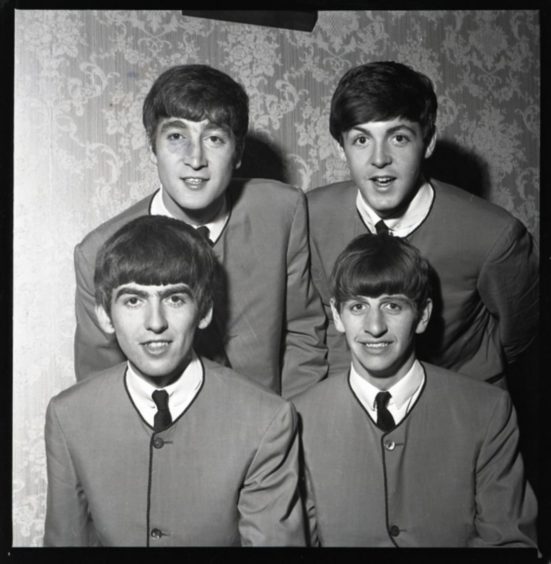It was the opposite of Beatlemania. A far-from-packed Beach Ballroom in Aberdeen, as a group of young musicians moved towards the end of their slightly underwhelming gig.
In the audience, meanwhile, a number of girls left their seats to go and collect their coats, as the prelude to making a quick exit to catch their bus.
But their actions sparked a plaintive response from one of the people on stage. Then John Lennon said over the microphone: “I didn’t think we were that bad.”
Final performance
And that was the first and last time the Fab Four, the group who transformed the music scene and inspired a whole generation in the Swinging Sixties, performed in Aberdeen.
Yet while John Lennon and his colleagues have been immortalised in music history and Oscar-winning director Peter Jackson’s Get Back will be watched by millions of people when his film about the Beatles is released in August, it’s easy to forget that the band had to pay their dues as youngsters, often in front of minute audiences who had still to be convinced these lads were the shiny future of pop and rock.
Ever since Please Please Me stormed to the top of the charts in 1963, they produced hit after hit, memory after memory: Yesterday, All You Need is Love, Hey Jude, She Loves You, Eleanor Rigby, Here Comes the Sun, I Want to Hold Your Hand, A Day in the Life….the list goes on and on.
And yet, this lustrous quartet only reached the stratosphere after embarking on often difficult tours of their homeland.
The schedule encompassed all manner of little gigs in small communities which the now-fabled Lennon and McCartney, with their friend, George Harrison, travelled to in a basic camper van. Luxuries there were none!
Richard Houghton
Richard Houghton has delved into their world, both before and after they became famous, and amassed the anecdotes of more than 400 people who encountered the Mersey group on their journey from the skiffle days as The Quarrymen, through to their thrilling early appearances at the Cavern Club in Liverpool and thereafter on to their emergence as global behemoths.
His findings commemorate a litany of catchy tunes and precious vignettes, encapsulating everything the world’s most famous group ever wrote.
And it celebrates the reasons why so many loved The Beatles.
Yet he has unearthed plenty of evidence that they were met with derision and incomprehension in some places and elicited a frosty response in the north of Scotland at the start of 1963 when they were billed as the “Love Me Do Boys”.
They were often the third or fourth names on the concert posters, and were paid with £10 here, £15 there, offset against petrol and lodgings in basic B&Bs.
But they persevered.
And there are many fans, who were then in their teens and are now 65 or 70 – or older – who have never forgotten their first trysts with the group.
Perhaps that’s because the Liverpudlians strutted their stuff in the most unlikely places.
Imagine watching them in a hard-nosed dockers’ bar.
Or in near-empty miners’ welfare halls or fishermen’s missions.
Learned their trade
As Mr Houghton told me: “Some people think they just went into the studio and started recording hits. But nothing could be further from the truth. They actually spent years on the road, learning their trade, and playing to all different kinds of audience.”
There were times when they contemplated throwing in the towel and finding “proper” jobs. But mercifully, they persevered and eventually gained their reward.
Scotland loomed large on their schedule as they strove to break into the charts.
So it’s hardly surprising that Mr Houghton managed to track down myriad voices from the north-east who saw The Beatles.
On January 3 1963, they performed a gig in Elgin, which wasn’t a sell-out.
Yet Adeline Reid will never forget the experience, nor her meeting with Lennon at his cheekiest.
As she said: “I was a student nurse, training at Dr Gray’s Hospital in Elgin. I lived in a boarding house not far from the Two Red Shoes Ballroom.
“The landlady was very genteel, she was aloof and did not tolerate bad manners. We were her girls.
“Next door was another boarding house whose owners were friends of Albert Bonici, the owner of the Two Red Shoes.
“All the artists who appeared at the ballroom stayed there and it was an exciting time.
“And then along came The Beatles and, seemingly, their appearance at the Two Red Shoes did not go down too well. My friend Joan and I were unable to get tickets, which were 4/6 – about 23p in modern money and quite an expense in these days.
“However, when I was about to go to hospital for work the next day, The Beatles were hanging out of the window next door. I could have reached out and touched them.
“Their personalities were cheeky and outrageous and not what we were used to at all. I thought they were fun. John Lennon asked me to take his pulse. And my face went the colour of a tomato. At the house door, our landlady suddenly appeared, who proceeded to reprimand them for their cheek. She did not approve of them talking to her girls in such a shocking manner!
“But, there again, you can just imagine the chat at the hospital – and especially, a few weeks later, when the Beatles became famous!”
Fraser Gow
Fraser Gow was just 18 when he saw the band at the Town Hall in Dingwall on January 4 in 1963.
He said: “I worked for the Milk Marketing Board. I had another two mates with me that day. One was James Burgess. He had muscular dystrophy and was in a wheelchair. And the other was James Gordon.
“The venue was the local town hall in Dingwall itself, and there was an upstairs and downstairs.
“We always went up the road to what they called the Pavilion in Strathpeffer and we thought: ‘We’ll go and see what these guys are like’.
“I reckon there were about 20 of us there in total. It was pretty empty.
“They were quite a loud band and, in a big empty hall, it was probably making it worse. There was more echo than anything else. They were a bit of a rock band and we said: ‘Och no, we can’t be bothered with this’.
“I think they cut their losses and stopped playing. The people behind us got their money back. And then, a few weeks later, they were the ‘in thing’.
“They were off and running.”
Love Me Do
Billy Shanks was just 17 when he trotted along to that Dingwall gig.
He said: “They weren’t very well known at the time. I didn’t know anything about them. It didn’t register that they had recorded ‘Love Me Do’ which went to No 1 in the charts.
“And the funny thing is that when I went in the door to go upstairs, the doorman said: ‘Before you pay, go up and have a listen’. And I looked in the door and thought: ‘No, no, it’s not my type of music.’ I walked out and went to the local village hall five miles away to hear The Melotones.
“I’m afraid that I wasn’t a very good judge of music, because about three months later, they were worldwide famous and they helped changed the face of music. The 19 people that did stay (at the Dingwall event) still talk about it to this day.”
Beach Ballroom
The words reflect the negative impression which The Beatles made on many listeners in these early sojourns.
And then you come to the aficionados who attended the Fab Four’s only gig at the iconic Beach Ballroom on January 6, 1963. Once again, they weren’t the headline act and there were even reports that some of the crowd booed them.
The majority loved it, though, including a young Norman Shearer, who was in a local band The Facells.
As he recollected: “The concert was terrific, but not for all of the audience.
“There are still silly rumours that they were booed off the stage, but that is nonsense.
“They were well received by the bulk of the listeners, and I still have a very clear picture in my mind of John Lennon standing on the stage with his guitar slung square across his body belting out Johnny B Goode and Roll Over Beethoven.
“My impression was that they were great. My mate, Ian, was also there, sitting with his girlfriend near the front. He remembers that they finished with Love Me Do and then the curtains were supposed to close.
“But they didn’t, so the band repeated the song while Paul was urging the technician to close the curtains. But they finished and still they didn’t close, so they sang it again and this time – success! That concert was an extraordinary night and one that I will never forget.”
Elsewhere at the venue, Liz Wilson was also luxuriating in a once-in-a-lifetime event in the Granite City. As she said: “I remember it being a freezing night and my friends and I were huddling in the entrance, waiting for the doors to open.
“While we were queuing, four scruffy-looking guys approached us to enter. The door was locked, but they were really nice and I loved listening to their funny accents.
“We spoke to them while waiting for the attendants to unlock the door and we found out they were the act for the evening. So we chatted excitedly about meeting the guys, wondering if they were going to be any good.
“Little did we know what we were about to witness. When they came on stage, wow, what a transformation! Gone were the four scruffy guys and there stood the Beatles, wearing cute suits with their identical haircuts.
“They were utterly wonderful. The sound and the vocals was something I will never forget. And I got the chance to met them. I just wish I had got their autographs.”
Caird Hall
The Beatles attracted an altogether more rapturous reception when they played at the Caird Hall in Dundee towards the end of 1964.
They were superstars by this stage and created enduring memories with a collection of songs which are now indelibly etched in the music chronicles.
Jim Scott, a retired art teacher, was in the crowd and has never forgotten the concert. He said: “They had this incredible raw energy and they whipped up a huge storm.
“You could tell that they had developed their own identity and the harmonies between Lennon and McCartney sent shivers up your spine. It was like nothing we had ever heard before. And we were blown away.”
It was another time, another place.
But these early experiences in Scotland prove that the Beatles had to go on their own Long and Winding Road before sparking a Revolution!
